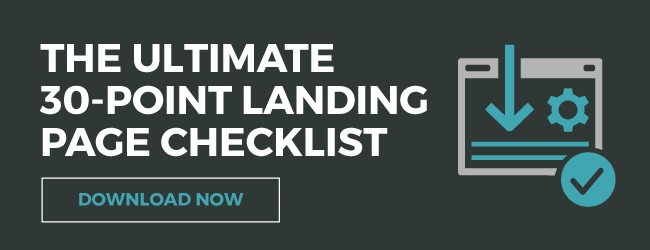9 Ways to smash your next B2B email marketing campaign
Contrary to popular belief, B2B email marketing is certainly not dead. The style and nature of email marketing has changed though. While email is not the be all and end all of marketing, it does play a vital role in engaging your potential customers. Therefore, it's important to get it right.
Are your email marketing stats are leaving a bad taste in your mouth, perhaps with a depressing open rate or an even worse click-through? Each email in a user’s inbox only gets a split-second of attention, and although there's no magic way to make your audience read your emails, we have a solid list of suggestions to help you turn things around…
Delve into your data
Data is central to the success of your B2B email marketing campaigns. It's crucial to ensure that you are targeting the right people, at the right time. If you don’t, you run the risk of ending up in the deleted folder, even being identified as a spammer.

B2B email data decays by 35% per year, so if you haven't examined your database in a while, it most likely contains a substantial number of "dead" leads.
There are various reasons why data may no longer be relevant. People drop out of the buying process; individuals change roles at work or leave their company altogether.
Similarly, some of your records may be "dirty" - for instance, if they are incomplete, duplicated, or were obtained unfairly. Your database should be cleansed to remove any data that falls into these categories.
Personalise
Done right, personalisation can really ad value. Quite easily, you can make your recipients feel valued, however be careful not to descend into stalker mode; Including the recipient’s name in the subject line, or opening paragraph is great; however, following this with information about their location or background is probably taking it too far.
According to HubSpot's Science of Email Marketing Report, you can increase click-through rate from 5.8% to 7% by using first name personalisation. Recipients are more likely to feel that the content you are offering is something that will benefit them if it is addressed to them directly.
The subject line is key
While they may seem like a small part of your message, they're one of the very first impressions you have on your email recipients. Consider the volume of emails you receive on a daily basis- your subject line is your way of standing out in a crowded inbox. Up to 33% of email recipients decide whether or not to open an email based on subject line alone. That's why it we can’t emphasize the importance of an appealing subject line enough.
Keep it brief
People like minimalist, consumable content. If you send an email that contains a giant wall of text, you can forget about generating a decent level of interaction. Messages that are clear, concise and get straight to the point are ideal- avoid fluff and just give the people what they want.
Segment Segment Segment
A successful email marketing campaign relies on effective database segmentation. Different groups of customers  will be more responsive to different messages; by segmenting your database, you can send more relevant emails to your recipients. If you’re noticing your opens and clicks are trending downwards, examine your contact list for relevancy. Content that is applicable to a B2B manufacturer for example, is going to be of little interest to a B2C retailer.
will be more responsive to different messages; by segmenting your database, you can send more relevant emails to your recipients. If you’re noticing your opens and clicks are trending downwards, examine your contact list for relevancy. Content that is applicable to a B2B manufacturer for example, is going to be of little interest to a B2C retailer.
So what’s the best way to segment your contacts? There are no hard and fast rules; it's really a case of doing what's best for your business. For instance, you might choose to segment by buyer personas, location or job role to name a few.
Aim for the decision makers
Quite often, B2B purchasing decisions are not made by one person, instead it involves a group of people, known as the Decision Making Unit (DMU).
A common trap that marketers often fall into, is targeting emails to only the influencers or the final decision makers. Both groups have an important role in the purchase process, but they will all have different pain points. A member of the DMU will look at your B2B email marketing campaigns from his or her own perspective. So it is crucial to adapt your message accordingly. Consider the needs and concerns of a chief financial officer compared to those of a marketing manager.
Have an email marketing strategy in place to diversify your messages and collect additional data points for targeting purposes.
Incentivize content
A common blunder is not putting enough effort into the content itself; you need to make it appealing and worthwhile for contacts to take action. Make sure that it aligns with your recipients’ stage in the buyer's journey. Clearly indicate what your prospects' next step should be and don’t forget to use actionable language to guide conversions.
Optimise landing
Although landing pages aren’t technically part of the email itself, it does have a significant effect on your email marketing stats. It should clearly relate to the content of the email, have a clear layout and simple form. If you’re sending leads to a poor landing page, you won’t have much luck with your campaign.
Analyse & review the results
Make sure you’re measuring individual email performance and the health of your emails list. The three key email metrics every marketer should be measuring are:
- Delivery rate (or bounce rate)
- Open rate
- Click-through rate
By tracking these results, you can make informed decisions for your next campaign. Such as, if you have a poor open rate, making changes to your subject line would be a good place to start. A bad click-through rate could prompt an adjustment of your CTAs- either through design or wording to ensure that they are relevant to the content of your email.
Be smart about which metrics you're tracking, and make sure you're able to effectively measure your individual email performance, the health of your email list, and your progress toward your overarching goals.
B2B email marketing remains a powerful marketing tool. Not only for improving lead generation, but also for up-selling opportunities and customer retention. By delivering engaging information to a targeted contact list, you can build your client base, establish your business as a thought-leader and improve your ROI. While the content you offer is vital, the way you structure your campaigns matters enormously too. Always use the right data, segment your database, personalise your emails and never forget to analyse your results.
